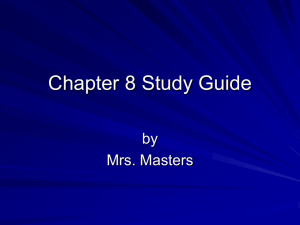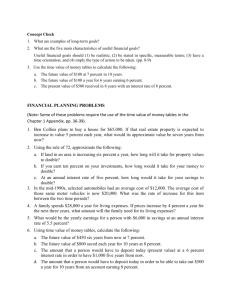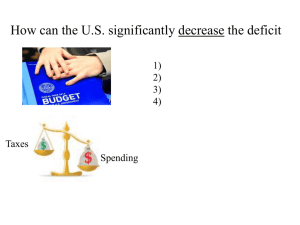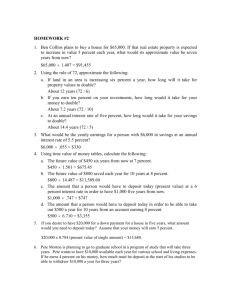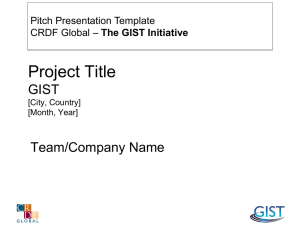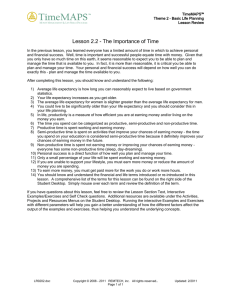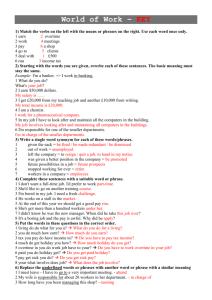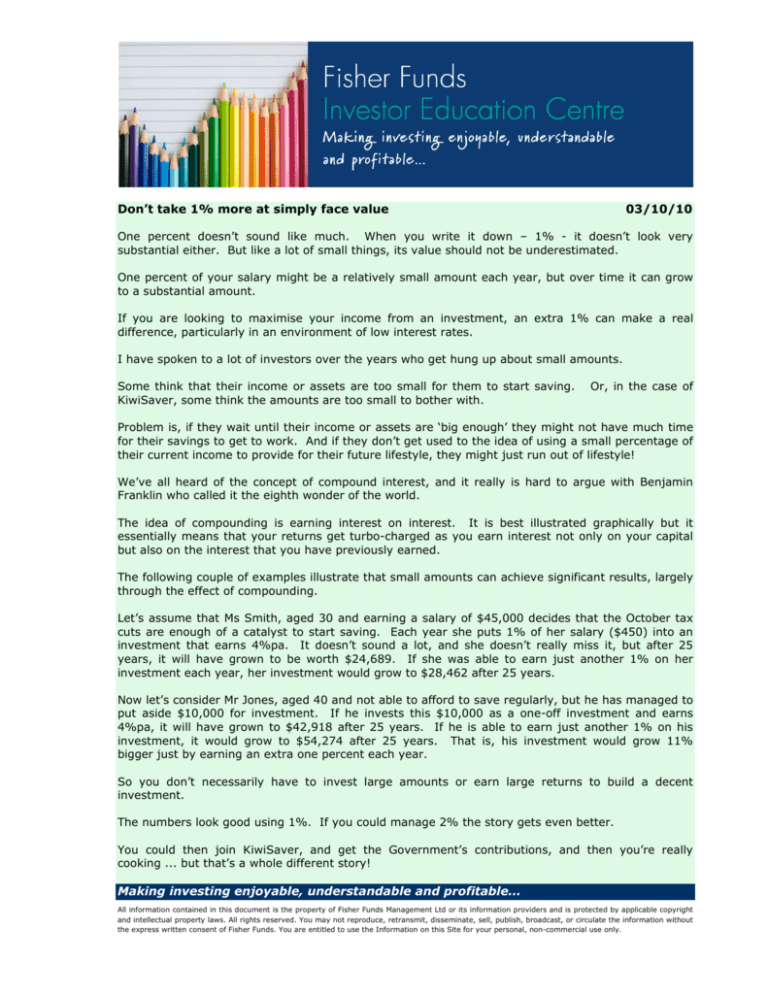
Don’t take 1% more at simply face value
03/10/10
One percent doesn’t sound like much. When you write it down – 1% - it doesn’t look very
substantial either. But like a lot of small things, its value should not be underestimated.
One percent of your salary might be a relatively small amount each year, but over time it can grow
to a substantial amount.
If you are looking to maximise your income from an investment, an extra 1% can make a real
difference, particularly in an environment of low interest rates.
I have spoken to a lot of investors over the years who get hung up about small amounts.
Some think that their income or assets are too small for them to start saving.
KiwiSaver, some think the amounts are too small to bother with.
Or, in the case of
Problem is, if they wait until their income or assets are ‘big enough’ they might not have much time
for their savings to get to work. And if they don’t get used to the idea of using a small percentage of
their current income to provide for their future lifestyle, they might just run out of lifestyle!
We’ve all heard of the concept of compound interest, and it really is hard to argue with Benjamin
Franklin who called it the eighth wonder of the world.
The idea of compounding is earning interest on interest. It is best illustrated graphically but it
essentially means that your returns get turbo-charged as you earn interest not only on your capital
but also on the interest that you have previously earned.
The following couple of examples illustrate that small amounts can achieve significant results, largely
through the effect of compounding.
Let’s assume that Ms Smith, aged 30 and earning a salary of $45,000 decides that the October tax
cuts are enough of a catalyst to start saving. Each year she puts 1% of her salary ($450) into an
investment that earns 4%pa. It doesn’t sound a lot, and she doesn’t really miss it, but after 25
years, it will have grown to be worth $24,689. If she was able to earn just another 1% on her
investment each year, her investment would grow to $28,462 after 25 years.
Now let’s consider Mr Jones, aged 40 and not able to afford to save regularly, but he has managed to
put aside $10,000 for investment. If he invests this $10,000 as a one-off investment and earns
4%pa, it will have grown to $42,918 after 25 years. If he is able to earn just another 1% on his
investment, it would grow to $54,274 after 25 years. That is, his investment would grow 11%
bigger just by earning an extra one percent each year.
So you don’t necessarily have to invest large amounts or earn large returns to build a decent
investment.
The numbers look good using 1%. If you could manage 2% the story gets even better.
You could then join KiwiSaver, and get the Government’s contributions, and then you’re really
cooking ... but that’s a whole different story!
Making investing enjoyable, understandable and profitable…
All information contained in this document is the property of Fisher Funds Management Ltd or its information providers and is protected by applicable copyright
and intellectual property laws. All rights reserved. You may not reproduce, retransmit, disseminate, sell, publish, broadcast, or circulate the information without
the express written consent of Fisher Funds. You are entitled to use the Information on this Site for your personal, non-commercial use only.

